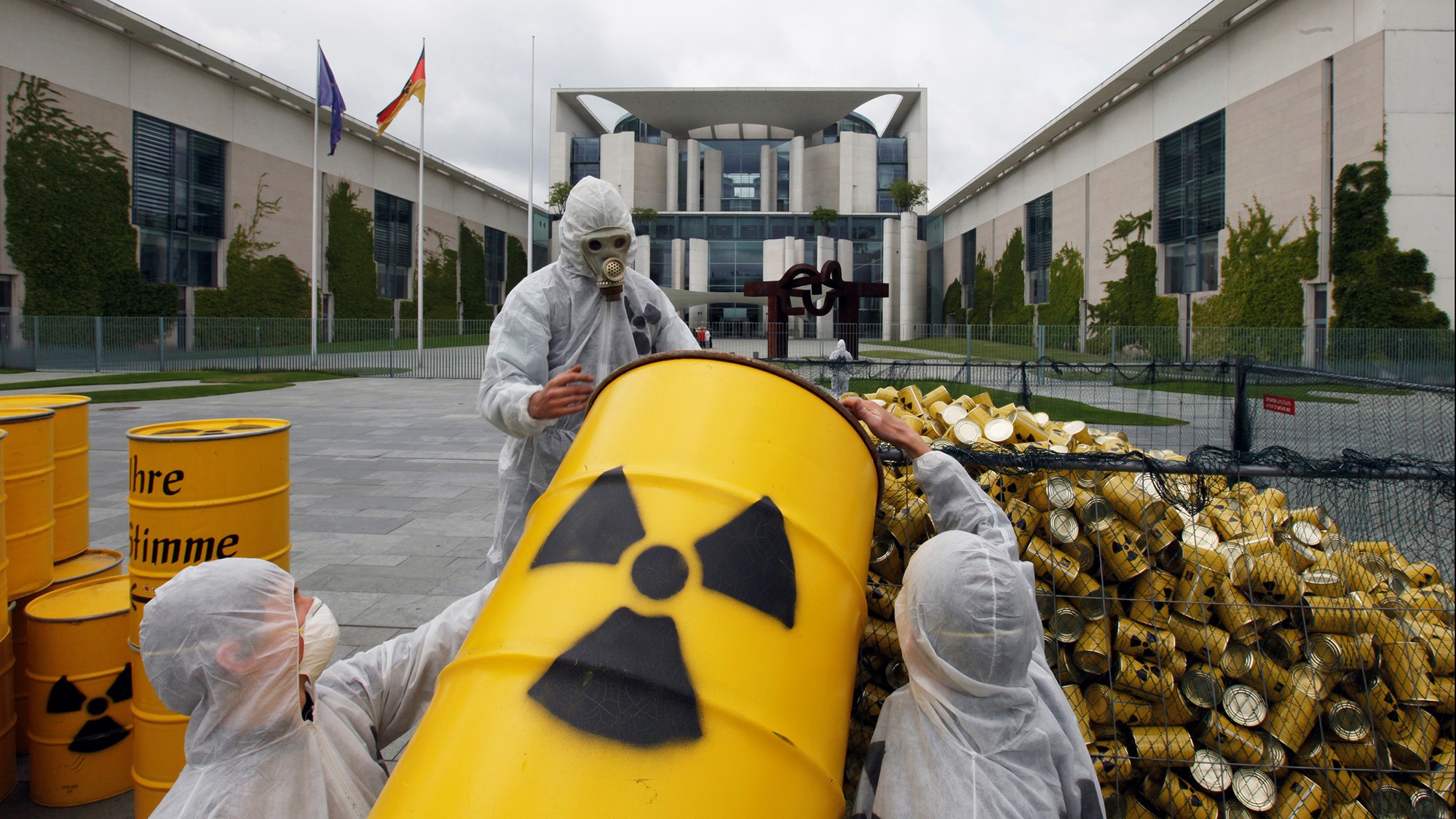
An exception has been found to Coulomb’s Law, the 250-year-old chemistry law stating that opposite forces attract, while similar forces repel. According to a study published in the German scientific journal Angewandte Chemie, researchers from Indiana University reported the first definitive evidence of a new type of molecular structure that alters the way nuclear waste is stored, reducing the risk of contamination.
More specifically, the study documents experimental proof for the existence of a bisulfate (HSO4) “supramolecule” with two negatively charged ions — something regarded as impossible for the last two centuries.
Most molecules are typically held together by the attraction apparent between opposite electrical charges. For example, common table salt is formed from an equal number of sodium and chlorine atoms held together because the sodium’s positively charged ions are attracted to the chlorine’s negatively charged ions. When water is added to table salt, the sodium and chlorine ions break their bonds and form new bonds with charges from the water molecules, causing the salt to dissolve. You get the point.
Amar Flood, the senior author of the study and a professor of chemistry at Indiana University, has been studying the electrical charges between pentagon-shaped molecules called cyanostars for years. Cyanostars' molecular bonds contain an inner ring of hydrogen atoms that are slightly positively charged and contain a pocket of positive charge capable of attracting negative ions, just like the chlorine in salt. In his experiments, two cyanostar molecules can successfully trap a single negative ion between them, “like a ball bearing sandwiched between two rings.”
When bisulfate was added to the mix, something remarkable happened: the cyanostars trapped two bisulfate ions between them instead of a single ion. The two bisulfate ions did not repel one another. Upon further investigation, Flood learned that the positively charged holes within the center of the cyanostars effectively diminished the repulsion, forming weak chemical bonds — called hydrogen bonds — between the two bisulfate ions, preventing them from drifting apart.
“This paper is inspirational because it may launch a new approach to supramolecular ion recognition,” said Jonathan Sessler, a professor of chemistry at the University of Texas at Austin who was not involved in the study. “I expect this will be the start of something new and important in the field.”
Regarding real-world applications, the ability to produce a negatively charged bisulfate dimer may lead to chemical solutions for several environmental challenges. For instance, when processing nuclear waste, radioactive material must first be treated for caustic soda and nitric acid before it can be vitrified into glass and stored underground. Since nitric acid contains nitrates with similar ions to bisulfate, Flood believes that the ion extraction properties of bisulfate molecules may enable a purer removal of the nitrates and thus cleaner nuclear waste with less potential water contamination.
A second practical application is rooted in cleansing the environmental pollution caused by runoff phosphates from fertilizers produced by large-scale dairy farms. Fertilizer washed off from the ground by rainfall makes its way into streams and lakes, where it disperses and triggers massive algal blooms that poison the water supply and kill the local fauna. Flood believes that cyanostar-compounds may be used to build effective negative ion detectors capable of extracting the phosphate that sparks the algae blooms.
Source: University of Indiana
Advertisement
Learn more about Electronic Products Magazine





